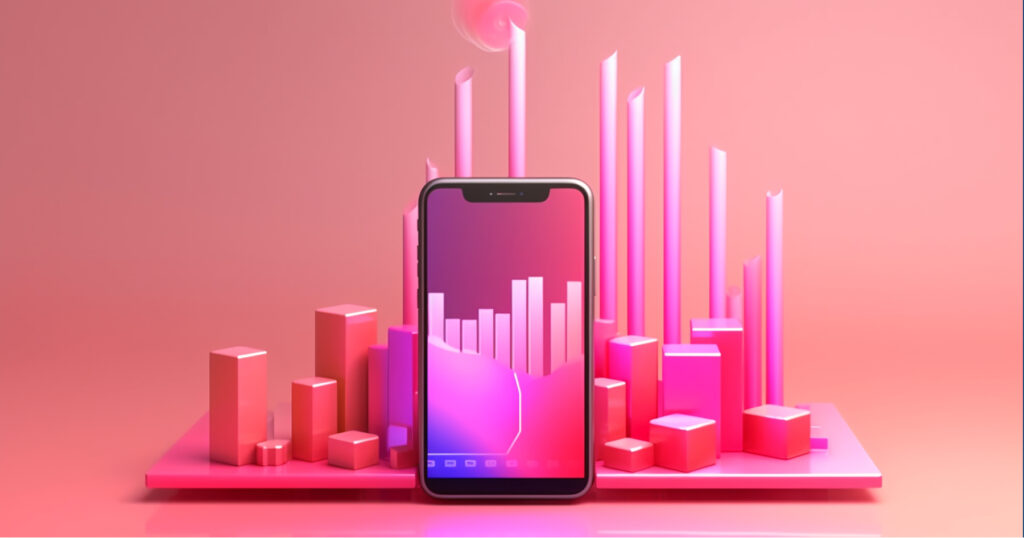Let’s face it – in the bustling world of social media, standing out isn’t a walk in the park. It’s a marathon. We’re here to turn that marathon into a fun, rewarding journey!
So, what’s the secret sauce to winning at Facebook campaigns and Instagram advertising? It’s not just about flashy visuals or catchy taglines. Instead, your social media strategy relies heavily on two aspects: structure and scheduling.
It’s about:
- Structure: Crafting a well-structured campaign is like building a house. You need a solid foundation, the right materials, and a clear blueprint. Without these, your house – or, in this case, your Facebook PPC campaigns – might not withstand the competition on social media channels.
- Scheduling: Timing is everything. It’s not just about what you post but when you post it. Scheduling your ads strategically can be the difference between shouting into the void and speaking directly to your audience.
In this ultimate guide to Facebook campaigns and Instagram advertising, we’re going to dive deep into these two key ingredients. We’ll explore the anatomy of an ad, the importance of a solid campaign structure, and the magic of scheduling.
We’ll also touch on the interplay of organic and paid Facebook advertising strategies, data-driven decision-making, and the tools you can use to create ads and manage them effortlessly.
Here’s a quick peek at what we’ll cover:
- Understanding the Anatomy of Facebook & Instagram Advertising
- Building a Solid Campaign Structure
- Designing Effective Ad Creatives
- Scheduling Your Facebook & Instagram Ads
- Interplay of Organic and Paid Strategies
- Making Data-Driven Decisions
- Tools for Ad Creation and Content
- Top of the Funnel Strategies
- Understanding and Implementing Server-Side Conversions
Whether you’re a seasoned growth marketer or a startup founder wearing multiple hats, this guide is designed to help you navigate the world of Facebook and Instagram advertising with ease.
Remember, in the world of social media advertising, there’s no one-size-fits-all approach. It’s all about experimenting, learning, and adapting.
With the help of our Facebook Ads Agency, you can ensure your campaigns are always on the cutting edge.
Understanding the Anatomy of Facebook & Instagram Advertising

Let’s kick things off by dissecting the anatomy of a Facebook and Instagram ad.
Just like a human body, an ad is made up of several key components, each playing a crucial role in its overall function and effectiveness.
Components of an Ad: headline, description, image/video, CTA
Think of your ad as a mini-story. It needs a catchy title (the headline), a compelling narrative (the description), eye-catching visuals (image/video), and a clear call-to-action (CTA).
- Headline: This is your first chance to grab your audience’s attention. It’s like the title of a book – it needs to be intriguing, relevant, and concise.
- Description: This is where you tell your story. It’s your opportunity to convey your message, highlight your value proposition, and engage your audience. Keep it simple, clear, and persuasive.
- Image/Video: A picture is worth a thousand words, and a video might just be worth a million. Visuals are a powerful way to engage your audience, evoke emotions, and bring your story to life.
- CTA: This is your ‘ask’. What do you want your audience to do after seeing your ad? Whether it’s to ‘Shop Now’, ‘Learn More’, or ‘Sign Up’, your CTA should be clear, compelling, and easy to act on.
How Each Component Contributes to the Overall Effectiveness
Each component of your ad plays a unique role in driving its effectiveness. Let’s break it down:
- Headline: Your headline sets the tone for your ad. It’s the hook that draws your audience in. A well-crafted headline can spark interest, stir curiosity, and compel your audience to read on. As far as text goes, you can have up to 40 characters in your headline. Keeping it concise ensures it’s easily readable and impactful.
- Primary Text: Your Facebook ad copy is where you deliver your message. It’s your chance to connect with your audience, build trust, and persuade them of your offer’s value. A compelling description can turn interest into desire and desire into action.
- Image/Video: Visuals are the heart of your ad. They capture attention, evoke emotions, and make your ad memorable. Whether it’s a stunning image or an engaging video, visuals can significantly boost your ad’s appeal and effectiveness.
- CTA: Your CTA is the final push that nudges your audience to take action. It’s the bridge between engagement and conversion. A clear and compelling CTA can significantly increase your click-through and conversion rates.
Remember, the most effective ads are more than just the sum of their parts. They’re a harmonious blend of compelling headlines, persuasive descriptions, engaging visuals, and clear CTAs.
So, as you craft your Facebook and Instagram ads, strive to create a cohesive and compelling narrative that resonates with your audience and drives them to action.
Building a Solid Campaign Structure

Now that we’ve got the anatomy of an ad down, let’s move on to another crucial aspect of Facebook and Instagram advertising: campaign structure. Think of this as the skeleton that holds your advertising efforts together.
Definition and Importance of Campaign Structure
So, what exactly is a campaign structure? In simple terms, it’s the way your Facebook campaigns are organized. It’s the hierarchy of your campaign, ad sets, and individual ads.
Why is it important, you ask? Well, a well-structured ad campaign is key to Facebook ads success for several reasons:
- Better Management: It’s easier to manage and navigate your Facebook campaigns when they’re neatly organized.
- Effective Optimization: With a clear structure, you can optimize at each level – campaign, ad set, and ad – for better performance.
- Accurate Tracking: A solid structure makes it easier to track performance and measure results, helping you make data-driven decisions.
Breakdown of Facebook & Instagram Campaign: Campaign, Ad Set, Ad
Let’s break down the three levels of a Facebook campaign to understand how to optimize it:
- Campaign: This is the top level, where you set your overall objective. Whether you’re aiming to boost brand awareness, increase website traffic, or drive conversions, your campaign objective will shape the structure and strategy of your Facebook PPC campaigns.
- Ad Set: This is the middle level, where you define your target audience, budget, schedule, and ad placement. Each ad set can contain multiple ads, allowing you to test different creatives and messages for the same audience. This flexibility helps refine your Facebook PPC campaigns for better performance.
- Ad: This is the bottom level, where you create your individual ads. Each ad consists of a headline, primary text, image/video, and CTA, as we discussed earlier. Crafting these elements effectively is crucial for the success of your Facebook PPC campaigns and achieving your campaign goals.
Here’s a pro tip: Structure your Facebook campaigns based on your marketing funnel. For instance, you could have one campaign for awareness (ToFu – Top of Funnel), another for consideration (MoFu – Middle of Funnel), and another for conversion (BoFu – Bottom of Funnel).
Within each campaign, you can create ad sets for different audience segments, and within each ad set, you can test different ads.
ToFu: The top of the funnel focuses on creating brand awareness and capturing the attention of a broad audience through engaging ads.
MoFu: The middle of the funnel nurtures leads by providing additional information, building trust, and offering compelling reasons to consider your brand or product.
BoFu: The bottom of the funnel aims to convert leads into customers by utilizing persuasive ads with strong calls to action, limited-time offers, or incentives to drive immediate action.
By segmenting your Facebook campaigns in this manner, you can effectively target different stages of your audience’s journey.
Remember, a well-structured campaign is like a well-oiled machine. It’s efficient, effective, and easier to manage. So, take the time to plan your campaign structure carefully. It might seem like a lot of work upfront, but trust us, it’ll pay off in the long run.
Best Practices for Structuring Your Campaign for Success

Let’s dive into some best practices to help you structure your Facebook campaigns like a pro.
Align with Your Marketing Funnel
Your campaign structure should mirror your marketing funnel. Have separate campaigns for each stage of the funnel – awareness, consideration, and conversion. This allows you to tailor your messaging and targeting for each stage, leading to more effective campaigns.
For example, a fitness app using the AAARRR framework might initially focus on Acquisition and Awareness by targeting health-conscious social media users unfamiliar with the app, highlighting its unique features.
The Activation and Retention stages could be combined in a campaign for those who downloaded the app, employing engaging workout tips and personalized challenges to prompt frequent usage.
Lastly, the campaign would aim for Revenue and Referral by offering premium features to engaged users and incentivizing them to refer the app to friends.
Segment Your Audience
Within each campaign, create separate ad sets for different audience segments. This could be based on demographics, interests, behaviors, or any other segmentation criteria relevant to your business.
By segmenting your audience, you can deliver more personalized and relevant ads, boosting the effectiveness of your Facebook PPC campaign.
For instance, using Facebook Lookalike Audiences allows you to target new users who resemble your existing customers, enhancing your ability to reach potential clients who are likely to engage with your brand.
A clothing retailer could create separate ad sets for different customer segments. One ad set might target young professionals interested in fashion, showcasing stylish workwear. Another ad set might target parents, promoting kid-friendly and durable clothing.
Test Different Creatives

Within each ad set of your Facebook campaigns, create multiple ads with different creatives. This could include different headlines, descriptions, images/videos, and CTAs. By testing different creatives, you can identify what resonates best with your audience and refine your Facebook ad strategy accordingly.
For example, a software company could create multiple ads for their new product launch, each with different headlines, images, and CTAs.
One ad might emphasize the product’s ease of use with a headline like “Simplify Your Life with Our User-Friendly Solution,” another might highlight its advanced features with a headline like “Unlock Powerful Capabilities with Our Cutting-Edge Technology,” and a third might focus on its competitive pricing with a headline like “Get More for Less – Affordable Solutions for Every Budget.”
By monitoring the performance of each ad and analyzing the response from their audience, advertisers can identify which messaging resonates best and adjust their future Facebook campaigns accordingly.
Set Clear Objectives
Be clear about what you want to achieve with each campaign, ad set, and ad. Whether it’s increasing brand awareness, driving website traffic, or boosting conversions, having clear objectives will guide your strategy and help measure your success.
For example, a high-tech startup launching groundbreaking software could set specific objectives for each stage of their campaign. They might aim to increase website traffic and social media engagement to boost brand visibility during the awareness stage.
For the acquisition and activation stages, their objective could be to encourage potential users to sign up for a free trial of their software. For the retention and revenue stages, they might focus on converting trial users into paid subscribers and promoting their referral program to expand their user base.
Monitor and Optimize
Keep a close eye on your campaign performance. Use the data to identify what’s working and what’s not, and make adjustments as needed. Remember, successful advertising is all about testing, learning, and optimizing.
For example, growth marketers might track metrics like customer acquisition cost (CAC), lifetime value (LTV), conversion rates, and retention rates to understand the effectiveness of their strategies. If a campaign aimed at reducing CAC isn’t achieving the desired results, they may need to reassess their marketing channels or targeting strategies.
Or if retention rates are lower than expected, they might experiment with different methods of user engagement. By continuously monitoring these metrics, growth marketers can identify areas for improvement and make data-driven decisions to optimize their campaigns.
Keep It Simple
While it’s important to segment your audience and test different creatives, don’t overcomplicate your campaign structure. Keep it simple and manageable. A complex campaign structure can be difficult to manage and may lead to inefficiencies.
For example, a tech startup may avoid creating overly complex campaigns with numerous audience segments and creative variations. Instead, they might focus on a few key customer segments and creatives, making the campaign easier to manage and optimize.
Consistency is Key
Ensure there’s consistency in your messaging across your Facebook campaigns, ad sets, and ads. While each ad may have a different creative, they should all align with your overall brand messaging and campaign objective.
For example, a car manufacturer launching a new model might ensure all their ads – whether they’re focusing on the car’s speed, safety features, or luxurious interior – align with their overall brand message of providing high-quality, innovative vehicles.
Even if the specific messaging varies from ad to ad, the overall brand message remains consistent.
The goal of structuring your campaign is to make your advertising efforts more efficient, effective, and manageable. So, as you build your campaign structure, keep these best practices in mind.
They’ll help you lay a solid foundation for your campaigns, enabling you to reach your audience more effectively and achieve your advertising goals.
Designing Effective Ad Creatives

Now that we’ve got our campaign structure in place let’s turn our attention to the star of the show: ad creatives. These are the visuals and copy that make up your ads, and they play a crucial role in capturing attention and driving action.
Importance of Creatives in Capturing Attention
In the fast-paced world of social media, capturing attention is half the battle. And that’s where creatives come in. Whether it’s a stunning image, an engaging video, or a catchy headline, your creatives are your first point of contact with your audience. They’re what stop the scroll, draw the eye, and spark interest.
Here’s the deal: People are visual creatures. We’re naturally drawn to visuals that are appealing, unique, and emotive. This is where Facebook video ads can truly shine. Video content often captures more attention than static images, allowing you to convey your message in a dynamic and engaging way.
For Facebook lead ads, for example, effective creatives are crucial as they need to capture interest quickly and encourage users to take action, such as filling out a form.
So, when designing your creatives of Facebook PPC campaigns, think about what will catch your audience’s eye and make them pause. Use high-quality images, engaging videos, and bold colors to make your ads stand out in the feed.
Role of Ad Copy in Convincing and Converting Users
While visuals capture attention, it’s your ad copy that convinces and converts. Your copy is where you deliver your message, highlight your value proposition, and persuade your audience to take action.
Here’s a pro tip: Keep your copy short, simple, and clear. Use persuasive language, but avoid jargon and complex terms. Your goal is to communicate your message as quickly and clearly as possible. And don’t forget your CTA – it’s the final push that nudges your audience to take action.
The Role of Creatives in Attracting Attention
Different ad placements require different types of creatives. For instance, in-stream ads and banners are great for short, impactful messages, while Stories and Reels allow for more immersive and engaging content.
Here’s a quick breakdown:
- In-Stream and Banner: These placements are often seen by users as they scroll through their feed. Your creatives need to be eye-catching and concise to capture attention quickly.
- Stories: Stories are full-screen vertical ads that allow for a more immersive experience. Use engaging visuals, interactive elements, and strong CTAs to make the most of this format.
- Reels: Reels are Instagram’s answer to TikTok, allowing for short, engaging video content. Use this format to showcase your brand’s personality, engage your audience, and drive action with clear CTAs.
Remember, the goal of your creatives is to capture attention, convey your message, and drive action. So, as you design your creatives, think about what will resonate with your audience, stand out in the feed, and align with your campaign objectives.
Differences in Creating Creatives for Instagram Feed, Stories, and Reels

Instagram offers a variety of formats for your ads, each with its unique characteristics and best practices. Let’s dive into the differences in creating creatives for Instagram Feed, Stories, and Reels.
Instagram Feed
The Instagram Feed is the first thing users see when they open the app. It’s where they scroll through posts from accounts they follow, as well as sponsored content. Here are some tips for creating feed ads:
- Visuals Matter: The feed is a visual space, so use high-quality images or videos that will stand out.
- Keep It Natural: Your ad should fit seamlessly into the user’s feed. It should feel like a regular post, not a disruptive ad.
- Clear and Concise Copy: You have limited space for your caption, so make it count. Keep your message clear, concise, and compelling.
- Use CTAs: Include a clear call-to-action to guide users on what to do next.
Instagram Stories
Stories are full-screen vertical ads that appear between users’ Stories. They’re immersive and interactive, offering a different kind of engagement. Here’s how to create effective Stories ads:
- Use the Full Screen: Unlike feed ads, Stories take up the entire screen. Use this space to create immersive visuals that grab attention.
- Make It Fast: Stories are quick, usually lasting around 15 seconds. So, get to the point quickly.
- Add Interactive Elements: Use features like polls, quizzes, and swipe-up links to engage users and drive action.
- Test, Test, Test: Stories are perfect for testing different content. Try different approaches to see what works best.
Instagram Reels
Reels are Instagram’s short-video format, allowing you to create short, engaging video content. Here’s how to make the most of Reels:
- Keep It Short and Sweet: Reels are all about quick, snackable content. Keep your videos short, engaging, and fun.
- Show Your Personality: Reels are a great way to showcase your brand’s personality. Don’t be afraid to be creative and show a different side of your business.
- Use Music and Effects: Reels come with a range of music and effects. Use these to make your videos more engaging and entertaining.
- Include a Clear CTA: Whether it’s to visit your website, shop your product, or simply like your video, include a clear call-to-action.
Each format offers unique opportunities to connect with your audience. The key is to understand the differences, tailor your content accordingly, and always keep your audience and objectives in mind.
A New Approach to Short Content: Threads
In the ever-evolving world of social media, Meta has introduced a new player to the game: Threads. Launched in July 2023, Threads is a standalone app designed to offer a more intimate and personal way to connect with your close friends.
But what does this mean for startup founders and growth marketers like you? Let’s dive in.
Why Threads Matters for Marketers
You might be wondering, “That’s great for personal use, but how does it help my business?” Well, Threads offers a unique opportunity for businesses to connect with their audience on a deeper level. Here’s how:
- Personalized Engagement: Threads allows you to engage with your most loyal followers in a more personal and intimate way. This can help strengthen your relationship with them, boosting brand loyalty and advocacy.
- Exclusive Content: You can use Threads to share exclusive content with your Close Friends list. This could be behind-the-scenes content, sneak peeks, or special offers. This not only rewards your most loyal followers, but also encourages others to join your Close Friends list for exclusive content.
- Real-Time Interaction: With Threads, you can interact with your audience in real time. This can make your audience feel more connected to your brand, enhancing their overall experience.
Threads is still a relatively new app, and its full potential is yet to be seen. But as a startup founder or growth marketer, it’s worth exploring and experimenting with.
After all, in the world of social media marketing, staying ahead of the curve can give you a competitive edge.
Best Practices for Creating Engaging Visuals

In the visually-driven world of social media, creating engaging visuals is key to capturing attention and driving engagement.
Whether it’s a single image, a carousel of photos, or a captivating video, your visuals can make or break your ad’s performance. So, let’s dive into some best practices for creating engaging visuals across different formats.
Image Ads
Image ads are the simplest form of advertising on social media. They consist of a single image accompanied by a caption. Here’s how to make them stand out:
- High-Quality Images: Always use high-resolution images. Blurry or pixelated images can harm your brand’s image and reduce engagement.
- Relevant Visuals: Your image should be relevant to your message. It should support your caption and CTA, not distract from them.
- Brand Consistency: Your visuals should align with your brand’s aesthetic. Consistency in colors, style, and tone can enhance brand recognition and trust.
- Minimal Text: Avoid cluttering your image with text. Too much text can be distracting and may even violate platform guidelines.
Carousel Ads
Carousel ads allow you to showcase multiple images or videos in a single ad. Users can swipe through the carousel to view all the content. Here’s how to make the most of this format:
- Tell a Story: Use the carousel format to tell a story or showcase a process. This can engage users and encourage them to swipe through all the content.
- Showcase Variety: Use different images or videos to showcase different features, products, or testimonials. Variety can keep users engaged and provide more information.
- Consistent Design: While each slide can showcase different content, the overall design should be consistent. This can create a cohesive experience and reinforce your brand image.
Video Ads
Video ads are a powerful way to engage users and convey your message. They can be used in the feed, Stories, or Reels. Here’s how to create engaging video ads:
- Short and Sweet: Keep your videos short and to the point. Social media users often have short attention spans, so get your message across quickly.
- Captivating Start: The first few seconds of your video are crucial. Use them to capture attention and encourage users to watch the rest of the video.
- Clear Message: Ensure your message is clear, even without sound. Many users watch videos without sound, so use captions or on-screen text to convey your message.
- Strong CTA: End your video with a clear and compelling call-to-action. This can guide users on what to do next, driving engagement and conversions.
Don’t be afraid to experiment with different visuals, formats, and strategies. Monitor your performance, learn from your results, and continually refine your approach.
Interplay of Organic and Paid Strategies on Facebook & Instagram

In the world of social media marketing, there’s often a debate between organic and paid strategies. But the truth is, both have their place in a well-rounded marketing strategy.
Let’s explore how these two strategies can work together on Facebook and Instagram.
Understanding the Balance Between Organic Content and Paid Ads
Organic content refers to the posts you share on your social media profiles without any paid promotion. These posts can reach your followers and, if they’re engaging enough, their friends too.
On the other hand, paid ads are posts or content that you pay to promote, reaching beyond your existing followers to a wider audience.
Balancing these two strategies is crucial. Here’s why:
- Building Authentic Relationships: Organic content allows you to build authentic relationships with your audience. It’s your chance to show your brand personality, engage with your followers, and build a community.
- Expanding Your Reach: Paid ads allow you to expand your reach beyond your existing followers. They can help you target specific demographics, drive traffic to your website, and increase conversions.
- Maximizing Your Impact: By balancing organic content and paid ads, you can maximize your impact on social media. Your organic content builds your brand and engages your followers, while your paid ads drive traffic and conversions.
How Organic Content Can Support Your Paid Advertising Efforts
Organic content and paid ads aren’t just two separate strategies. They can actually support each other. Here’s how:
- Testing Ground: You can use your organic content as a testing ground for your paid ads. By monitoring which posts get the most engagement, you can identify what type of content resonates with your audience and use this insight to create more effective ads.
- Boosting Engagement: When you have engaging organic content, it can boost the performance of your paid ads. If people are engaging with your organic posts, it signals to the social media algorithms that your content is high-quality, which can help your ads get more visibility.
- Building Trust: Organic content can help build trust and credibility for your brand. When people see your paid ads, they might visit your profile to learn more about your brand. If they see a profile full of engaging organic content, it can help build trust and increase the chances of them following your call-to-action.
Strategies for Developing a Complementary Organic Strategy
So, how can you develop an organic strategy that complements your paid advertising efforts? Here are some tips:
- Consistent Branding: Ensure your organic posts and paid ads have consistent branding. This includes your brand voice, colors, imagery, and overall messaging.
- Engaging Content: Create organic content that your audience will want to engage with. This could be educational content, behind-the-scenes peeks, user-generated content, or anything else that your audience finds valuable or entertaining.
- Regular Posting: Maintain a regular posting schedule for your organic content. This can help keep your audience engaged and increase your visibility on the platform.
- Community Engagement: Don’t just post content—engage with your community. Respond to comments, ask questions, and show your audience that you value their input.
Remember, organic content and paid ads are two sides of the same coin. By understanding how they interact and complement each other, you can create a more effective and holistic social media marketing strategy.
Scheduling Your Facebook & Instagram Ads

Timing is everything in the world of any social media advertising platform. It’s not just about creating engaging content but also about ensuring that your content reaches your audience at the right time. That’s where ad scheduling comes into play.
Ad scheduling is a feature offered by Facebook and Instagram that allows you to set specific times for your ads to run. This can be particularly useful for Facebook ads in targeting different time zones or for aligning your ads with peak activity times on the platforms.
Here are some tips for timing your ads to match user activity:
- Understand Your Audience’s Activity Patterns: Use the insights provided by Facebook and Instagram to understand when your audience is most active. This can help you schedule your ads to run during these peak times.
- Consider Time Zone Differences: If your audience is spread across different time zones, consider this when scheduling your ads. You want to ensure your ads are running during peak times in each time zone.
- Optimizing Your Ad Spend: Ad scheduling isn’t just about when your ads are shown, but also when they’re not shown. By avoiding times when your audience is less active, you can save on unnecessary ad spend and get more bang for your buck.
- Align with Your Marketing Strategy: Your ad schedule should align with your overall marketing strategy. For instance, if you’re launching a new product, you might want to schedule your ads to run just before and during the launch.
- Test and Optimize: Don’t be afraid to experiment with different schedules to see what works best. Monitor your ad performance and adjust your schedule as needed to optimize results.
- Managing Your Workload: Ad scheduling can also help you manage your workload. By scheduling your ads in advance, you can ensure your campaigns run smoothly, even when you’re not actively managing them.
- Use Ad Scheduling Tools: Tools like Facebook’s ad scheduling feature or third-party platforms like Hootsuite or Sprout Social can help automate the scheduling process, saving you time and effort.
How to Use Ad Scheduling Tools
Ad scheduling tools are your best friends when it comes to managing your Facebook and Instagram ads. They not only save you time but also help you optimize your ad performance. But how exactly do you use these tools? Let’s break it down step by step.
Facebook’s Ad Scheduling Feature
Facebook’s built-in ad scheduling feature is a great starting point for effective Facebook ad campaigns. Here’s how to use ad manager:
- Create Your Ad: Start by creating your ad as you normally would in Facebook Ads Manager. Once you’ve chosen your objective, defined your audience, and created your ad creative, you’ll reach the “Budget & Schedule” section.
- Choose Your Schedule: Under the “Ad Scheduling” option, select “Run ads on a schedule”. This will allow you to choose specific days and times for your ads to run.
- Set Your Schedule: Click on the boxes that correspond to your desired days and times. You can choose different schedules for different days, allowing you to customize your ad schedule to match your audience’s activity.
- Review and Launch: Once you’ve set your schedule, review your ad and click “Confirm” to launch it. Facebook will now run your ad according to your set schedule.
Third-Party Ad Scheduling Tools
If you’re managing multiple campaigns or platforms, third-party tools like Hootsuite or Sprout Social can be a lifesaver.
Here’s a basic guide on how to use them:
- Connect Your Accounts: After signing up for the tool, connect your Facebook and Instagram accounts to your ad account. This will allow the tool to manage your ads on these platforms.
- Create Your Ad: Use the tool’s ad creation feature to create your ad. This process will be similar to creating an ad in Facebook Ads Manager.
- Set Your Schedule: Use the tool’s scheduling feature to set your ad schedule. You can usually choose specific days and times, just like in Facebook’s ad scheduling feature.
- Launch Your Ad: Once you’ve set your schedule, launch your ad. The tool will now manage your ad schedule for you, running your ads at your chosen times.
Ad scheduling tools are designed to make your life easier. They automate the scheduling process, freeing up your time to focus on other aspects of your business. So, don’t be afraid to leverage these tools to optimize your Facebook and Instagram advertising.
Don’t miss out on supercharging your Facebook and Instagram campaigns!
Download our comprehensive Meta Scheduling Template, your roadmap to crafting, scheduling, and optimizing successful social media campaigns.
Making Data-Driven Decisions in Instagram Advertising

Data is your compass! It guides your decisions, informs your strategies, and helps you optimize your campaigns. Let’s delve into the importance of data in your Instagram ad strategy and how you can leverage it for success.
Importance of Data in Instagram Ad Atrategy
Data is crucial in Instagram advertising for several reasons:
- Understanding Your Audience: Data helps you understand who your audience is, what they like, and how they interact with your content. This can guide your content creation, targeting, and overall strategy.
- Measuring Performance: Data allows you to measure the performance of your ads. You can see which ads are driving the most engagement, traffic, or conversions, and which ones might need tweaking.
- Optimizing Your Campaigns: By analyzing your data, you can identify opportunities for optimization. This could be adjusting your targeting, tweaking your ad creative, or changing your bidding strategy.
- Informing Your Strategy: Over time, your data can provide valuable insights into trends and patterns. This can inform your long-term strategy and help you make more informed decisions.
How to Leverage Instagram Insights for Campaign Optimization
Instagram Insights is a powerful tool for understanding your ad performance and optimizing your campaigns. Here’s how to use it:
- Access Your Insights: You can access Instagram Insights directly from your Instagram account profile. Just tap on the menu in the top right corner and select “Insights.”
- Understand Your Metrics: Instagram Insights provides a range of metrics, including reach, impressions, engagement, clicks, and more. Understand what each metric means and how it relates to your campaign objectives.
- Analyze Your Performance: Look at your metrics to understand how your ads are performing. Are they reaching your target audience? Are they driving engagement or conversions? Use this information to assess your campaign performance.
- Identify Opportunities for Optimization: Use your insights to identify opportunities for optimization. This could be testing different creatives, adjusting your targeting, or experimenting with different Facebook and Instagram ad formats.
Strategies for Improving Your Ads Based on Data
Data is only as valuable as the actions you take based on it. Here are some strategies for improving your ads based on your data:
- Test Different Creatives: If your ads aren’t driving the engagement you want, try Facebook ads A/B testing to compare different creatives. This could be different images, videos, headlines, or ad copy.
- Adjust Your Targeting: If your ads aren’t reaching the right audience, consider adjusting your targeting. You can target based on demographics, interests, behaviors, and more.
- Experiment with Ad Formats: Different ad formats can drive different results. If one format isn’t working, try experimenting with others.
- Optimize Your Bidding Strategy: Your bidding strategy can have a big impact on your ad performance. If your costs are too high or your reach is too low, consider adjusting your bidding strategy.
Tools for Facebook & Instagram Ad Creation and Content

With the right tools, you can easily create stunning visuals and videos that grab your audience’s attention. Let’s explore some popular tools for content creation.
Popular Tools for Content Creation: Canva, Adobe Spark, InShot
Canva
Canva is a user-friendly graphic design tool that allows you to create stunning visuals without any design experience. It offers a wide range of features, including:
- Templates: Canva offers thousands of customizable templates for social media posts, ads, banners, and more. You can easily adjust the colors, fonts, and images to match your brand.
- Design Elements: Canva provides a library of design elements, including shapes, lines, frames, and more. You can use these elements to add a creative touch to your designs.
- Text Tools: Canva’s text tools allow you to add and format text in your designs. You can choose from a variety of fonts, adjust the size and color, and apply effects like drop shadow or outline.
- Image Tools: Canva allows you to upload your own images or choose from their library of stock images. You can then edit these images using Canva’s image tools, which include filters, cropping, and more.
Canva also offers a number of AI-powered features, including:
- Text to Image: With Canva’s innovative Text to Image feature, you can transmute written descriptions into compelling visuals effortlessly.
- Magic Eraser: Canva’s Magic Eraser feature acts like a digital paintbrush, letting you erase unwanted elements from your images with ease.
- Magic Design: Canva’s Magic Design is a smart feature that uses your basic input to create tailor-made designs. Simply input your requirements – such as a “social media post for a new product launch” – and watch as Canva crafts a bespoke design.
- Magic Write: With Magic Write, Canva takes over the burden of content creation. This AI-powered feature generates creative text content for your designs, turning a daunting task into a breeze.
Adobe Spark
Adobe Spark is another powerful design tool that’s perfect for creating social media content. It offers three main features:
- Spark Post: This feature allows you to create stunning graphics for your social media posts or ads. You can choose from a variety of templates, add your own images and text, and customize the design to match your brand.
- Spark Page: With Spark Page, you can create beautiful web pages in minutes. This is great for creating landing pages for your ads or showcasing your products or services in a visually appealing way.
- Spark Video: Spark Video allows you to create compelling videos for your social media platforms. You can add your own video clips or images, overlay text, and choose from a variety of themes and music.
InShot
InShot is a popular video editing app for mobile devices. It’s perfect for creating engaging videos for your Instagram Stories, Reels, or Facebook ads. Here’s what you can do with InShot:
- Video Editing: InShot allows you to trim, crop, and adjust your videos with ease. You can also add filters and effects to enhance your videos.
- Text and Stickers: With InShot, you can overlay text and stickers on your videos. This is great for adding captions, call-to-actions, or fun elements to your videos.
- Music and Sound Effects: InShot allows you to add music and sound effects to your videos. You can choose from their library or upload your own audio files.
- Video Speed: With InShot, you can adjust the speed of your videos. This is great for creating slow-motion or fast-paced videos.
Overview of Instagram’s Native Creative Tools: Layout, Boomerang, Hyperlapse

Instagram isn’t just a platform for sharing photos and videos; it’s also a powerful creative tool.
With features like Layout, Boomerang, and Hyperlapse, you can create unique and engaging content right within the app. Let’s take a closer look at these tools:
- Layout: Layout from Instagram allows you to combine multiple photos into a single image. You can choose from a variety of layouts and then drag and drop your photos to arrange them. This is great for creating collages, before-and-after sequences, or just showcasing multiple photos at once.
- Boomerang: Boomerang from Instagram lets you create mini videos that loop back and forth. Just tap the button once, and Boomerang will take a burst of photos and stitch them together into a high-quality mini video. This is perfect for capturing fun, spontaneous moments.
- Hyperlapse: Hyperlapse from Instagram allows you to create stunning time-lapse videos. Just tap the button to start recording, and Hyperlapse will stabilize your video for a cinematic look. You can also speed up your video up to 12 times for a unique effect.
Ad Management Tools: Hootsuite Ads, Sprout Social, AdEspresso
Managing your Facebook and Instagram ads can be a complex task, especially if you’re running multiple campaigns at once. That’s where ad management tools come in.
Here are three popular options:
- Hootsuite Ads: Hootsuite Ads simplifies the process of creating, managing, and optimizing your social media ads. It offers features like automatic ad creation and optimization, conversion tracking, and detailed analytics. Plus, it integrates with the rest of Hootsuite’s social media management tools, making it a comprehensive solution for your social media marketing.
- Sprout Social: Sprout Social is a social media management platform that includes powerful ad management features. You can create, manage, and optimize your ads, track your performance, and gain insights to improve your strategy. Sprout Social also offers features for managing your organic social media content, making it a versatile tool for your social media marketing.
- AdEspresso: AdEspresso by Hootsuite is a tool specifically designed for managing and optimizing your Facebook, Instagram, and Google Ads. It offers features like campaign creation and management, analytics and reporting, and optimization tools. AdEspresso also offers a library of ad examples and templates to inspire your own ads.
Tools for Creating Compelling Stories and Reels Content: Mojo, Unfold, CapCut, PicsArt
Creating engaging content for Instagram Stories and Reels requires creativity, but having the right tools can make the process much easier. Here are four tools that can help you create compelling Stories and Reels content:
- Mojo: Mojo is an app designed to create stunning video stories. It offers hundreds of templates, many of which are animated, to make your stories stand out. You can customize the templates with your own text, images, and videos, and you can also add music and change the style of your text. Mojo is available for both iOS and Android devices.
- Unfold: Unfold is another tool that offers templates for Instagram Stories. It provides a range of clean, stylish templates that you can customize with your own text and images. Unfold also offers advanced text tools, and you can export your stories in high resolution for Instagram.
- CapCut: CapCut is a video editing app that allows users to edit videos, add effects, filters, music, and more. CapCut is available for both iOS and Android devices and has gained popularity for its user-friendly interface and powerful editing features.
- PicsArt: PicsArt is a photo and video editing app that offers a wide range of tools, including photo effects, drawing tools, image editor, collage maker, sticker maker, camera, photo filters, video editor, free image library, face editor with face swap, beautify tools, and more. It’s a comprehensive tool for creating engaging visual content for your Instagram Stories and Reels.
Top of the Funnel Strategies
In the world of marketing, the “funnel” is a way to visualize the journey your customers take from first learning about your brand to making a purchase.
The top of the funnel (ToFu) is the first stage of this journey, where potential customers are just becoming aware of your brand.
Let’s explore how to define your ToFu audience and strategies for attracting them to your brand.
Defining Top of the Funnel (ToFu) Audience
Your ToFu audience is made up of people who are just becoming aware of your brand. They might have a problem or a need, and they’re starting to explore potential solutions. Here are some characteristics of a ToFu audience:
- Unaware of Your Brand: They might not know your brand exists, or they might have only a vague awareness of it.
- Exploring Options: They’re in the early stages of their buying journey, so they’re likely exploring different options and comparing solutions.
- Educational Content Seekers: They’re looking for information to help them understand their problem and potential solutions. They’re not ready to buy yet, but they’re open to learning more.
Strategies for Raising Awareness and Drawing in New Audience
Attracting a ToFu audience is all about raising awareness and providing value. Here are some strategies:
- Content Marketing: Create engaging, educational content that resonates with your audience. This could be short, informative videos, carousel posts showcasing your products or services, or thought-provoking Instagram Stories. For Facebook, consider longer form content like in-depth articles or live Q&A sessions.
- Facebook and Instagram Advertising: Both platforms offer robust advertising options that allow for detailed targeting. Create tailored ads for different audience segments and utilize the platforms’ targeting options to reach potential customers based on their interests, behaviors, location, and more.
- SEO for Facebook: While SEO is typically associated with websites and Google search, don’t forget that Facebook also functions as a search engine. Optimize your Facebook Page with relevant keywords in the description and posts to improve its discoverability.
- Instagram Influencer Marketing: Instagram is a hotspot for influencers. Collaborate with influencers whose audience aligns with your target demographic. A well-executed partnership can significantly boost your brand’s visibility and draw in a new audience.
- Facebook Groups: Actively participate in or even create your own Facebook groups that align with your brand or industry. Regular, valuable participation can raise awareness of your brand and attract group members to your Facebook Page or website.
Creative and Ad Structure Strategies Specifically for ToFu

When creating ads for a ToFu audience, your goal is to raise awareness and provide value. Here are some strategies:
- Educational Content: Your ads should provide value to your audience. This could be a helpful tip, a piece of educational content, or anything else that helps your audience understand their problem and potential solutions.
- Strong Headlines: Your headlines should grab your audience’s attention and make them want to learn more.
- Clear Call-to-Action: Your call-to-action should guide your audience to the next step, whether that’s visiting your website, downloading a resource, or following your social media profile.
- Engaging Visuals: Your visuals should be eye-catching and relevant to your ad. They should grab your audience’s attention and make them want to engage with your ad.
Attracting a ToFu audience is the first step in turning potential customers into loyal ones. By understanding your ToFu audience and using these strategies, you can raise awareness of your brand and start building relationships with potential customers.
Middle of the Funnel Strategies
After attracting your audience’s attention at the top of the funnel, it’s time to move them into the middle of the funnel (MoFu).
This is where you nurture their interest and build consideration for your brand. Let’s explore how to define your MoFu audience and strategies for engaging them.
Defining Middle of the Funnel (MoFu) Audience
Your MoFu audience is made up of people who have shown some interest in your brand and are now considering whether your product or service is the right solution for them. Here are some characteristics of a MoFu audience:
- Brand Awareness: They’re aware of your brand and have shown some interest, such as visiting your website, following you on social media, or subscribing to your newsletter.
- Considering Options: They’re considering different solutions and trying to decide which one is the best fit for their needs.
- Looking for More Information: They’re looking for more detailed information about your product or service to help them make their decision.
Strategies for Nurturing Interest and Building Consideration
Engaging a MoFu audience is all about providing more detailed information and showing them why your product or service is the best solution. Here are some strategies:
- Facebook Email Marketing Integration: Utilize the integration of email marketing with Facebook by creating Custom Audiences from your email list. This way, you can reach your existing subscribers with more detailed content on Facebook, sharing customer testimonials or showing off your product or service benefits.
- Retargeting Ads on Facebook and Instagram: Take advantage of the retargeting ad features on both platforms to reconnect with users who have shown interest in your brand. Remind them of your value proposition with ads specifically crafted for those who have visited your website or engaged with your previous content.
- Instagram Live and Facebook Webinars: Use Instagram Live sessions or Facebook’s webinar-friendly features to host product demos or informative sessions. Showcasing your product or service in real-time can help your audience understand its functions and benefits better.
- Facebook and Instagram Content Marketing: Continue sharing valuable content, but with a focus on your product or service. Share customer success stories as Instagram posts, detailed product usage guides as Instagram Reels, or short-form Facebook content. This can provide your audience with a deeper understanding of your product, its benefits, and its practical applications.
Creative and Ad Structure Strategies Specifically for MoFu
When creating ads for a MoFu audience, your goal is to build consideration and move them closer to making a purchase. Here are some strategies:
- Benefit-Focused Content: Your ads should clearly show the benefits of your product or service. This could be through customer testimonials, case studies, or a simple list of benefits.
- Clear Call-to-Action: Your call-to-action should guide your audience to the next step, whether that’s scheduling a demo, downloading a guide, or starting a free trial.
- Engaging Visuals: Your visuals should continue to be eye-catching and relevant to your ad. They should help illustrate the benefits of your product or service.
- Personalization: Personalize your ads based on what you know about your audience. This could be based on their behavior, interests, or where they are in the buying process.
Engaging a MoFu audience is all about building consideration and moving them closer to making a purchase. By understanding your MoFu audience and using these strategies, you can nurture their interest and guide them towards choosing your brand.
Understanding and Implementing Server-Side Conversions
Understanding and implementing server-side conversions is becoming increasingly important. This is particularly true in today’s privacy-focused digital landscape.
Let’s delve into what server-side conversions are, why they matter, and how to set them up on Facebook and Instagram.
Explanation of Server-Side Conversions
Server-side conversions are events that are tracked directly from your server rather than from a user’s browser. This is in contrast to client-side tracking, where events are tracked directly from a user’s browser using cookies or pixel tags.
When a user takes a specific action on your website, such as making a purchase or filling out a form, a signal is sent from your server to the server of the platform you’re using for tracking (like Facebook or Google).
This signal contains information about the event, such as the type of event, the value of the purchase, and any other relevant details.
Server-side tracking offers several advantages over client-side tracking:
- Accuracy: Server-side tracking is generally more accurate because it’s less likely to be blocked by browser settings, ad blockers, or other factors that can interfere with client-side tracking.
- Speed: Server-side tracking can be faster because it doesn’t rely on a user’s browser to send the tracking signal.
- Security: Because the data is sent directly from server to server, it’s less likely to be intercepted or manipulated.
Importance in Today’s Privacy-Focused Digital Landscape
In today’s privacy-focused digital landscape, server-side conversions are becoming increasingly important. Here’s why:
- Privacy Regulations: New privacy regulations like the General Data Protection Regulation (GDPR) and the California Consumer Privacy Act (CCPA) have placed stricter rules on how user data can be collected and used. Server-side tracking can help you comply with these regulations by giving you more control over how data is collected and processed.
- Browser Changes: Browsers like Google Chrome and Microsoft Edge have implemented changes that limit the use of third-party cookies, which are often used for client-side tracking. Server-side tracking isn’t affected by these changes, making it a more reliable option.
- Ad Blockers: Ad blockers can prevent client-side tracking from working properly. Because server-side tracking doesn’t rely on a user’s browser, it’s not affected by ad blockers.
How to Set Up Server-Side Conversions on Facebook & Instagram
Setting up server-side conversions on Facebook and Instagram involves using the Conversions API, which allows you to send web events from your server directly to Facebook. Here’s a basic overview of the process:
- Set Up the Conversions API: You’ll need to set up the Conversions API in your Facebook Business Manager. This involves creating an access token and installing the necessary code on your server.
- Send Events to Facebook: Once the Conversions API is set up, you can start sending events from your server to Facebook. This involves modifying your server code to send a signal to Facebook whenever a specific event occurs.
- Test Your Setup: Facebook provides a tool called the Test Events feature that allows you to test your setup and make sure events are being sent correctly.
- Optimize Your Campaigns: Once your server-side tracking is set up, you can use the data to optimize your Facebook and Instagram ad campaigns. This can help you improve your targeting, measure your ROI more accurately, and make more data-driven decisions.
Mastering Facebook & Instagram Campaigns

Congratulations, you’ve embarked on the dynamic journey of Instagram and Facebook PPC campaigns.
As startup founders and growth marketers, you’re gearing up to create a remarkable social media presence. You’ve armed yourselves with essential knowledge that’s ready to be put into action.
- Ad Essentials: You’ve decoded the key components of an ad, acknowledging that every headline, description, image/video, and CTA serves a unique purpose and plays a vital role in overall effectiveness. These elements are integral to your social media posts.
- Campaign Structure & Timing: You’ve seen the significance of a well-planned campaign structure and realized the impact of ad scheduling. You know that reaching your audience at the right time is pivotal for your social media campaign.
- Creatives & Content: You understand that your ad creatives are the spotlight, capturing attention, and your compelling ad copy plays the protagonist, persuading and converting users. These will be pivotal when you schedule Instagram posts or Facebook ad campaigns.
- Balancing Act: You’ve learned the art of balancing organic content and paid ads. You understand that they complement each other in your marketing dance, contributing to a cohesive social media content calendar.
- Data Power: You’ve recognized the prowess of data-driven decisions and learned how to harness the power of social media analytics and Instagram Insights for campaign optimization.
- Tools & Technologies: You’ve discovered powerful tools for content creation and ad management, preparing to employ them across every social media channel in your campaign arsenal.
- Funnel Focus: You’ve explored ToFu and MoFu strategies, ready to engage audiences at every stage of the customer journey. Your social media team is set to implement these insights effectively.
- Privacy & Precision: You’ve grasped the importance of server-side conversions in today’s privacy-centric world, ready to implement them for precise ad tracking.
Remember, the magic formula for success in Facebook and Instagram campaigns is understanding your audience, crafting engaging content, and continually optimizing based on data.
Test, learn, optimize, and repeat. Be strategic, be creative, and most importantly, be authentic in connecting with your audience.
Armed with this knowledge, you’re not just ready but primed for success. Now it’s time to roll up your sleeves and bring your campaigns to life. Embrace the journey and make your mark in the world of Facebook and Instagram marketing. Onward to success!
Don’t miss out on supercharging your Facebook and Instagram campaigns!
Download our comprehensive Meta Scheduling Template, your roadmap to crafting, scheduling, and optimizing successful social media campaigns.

